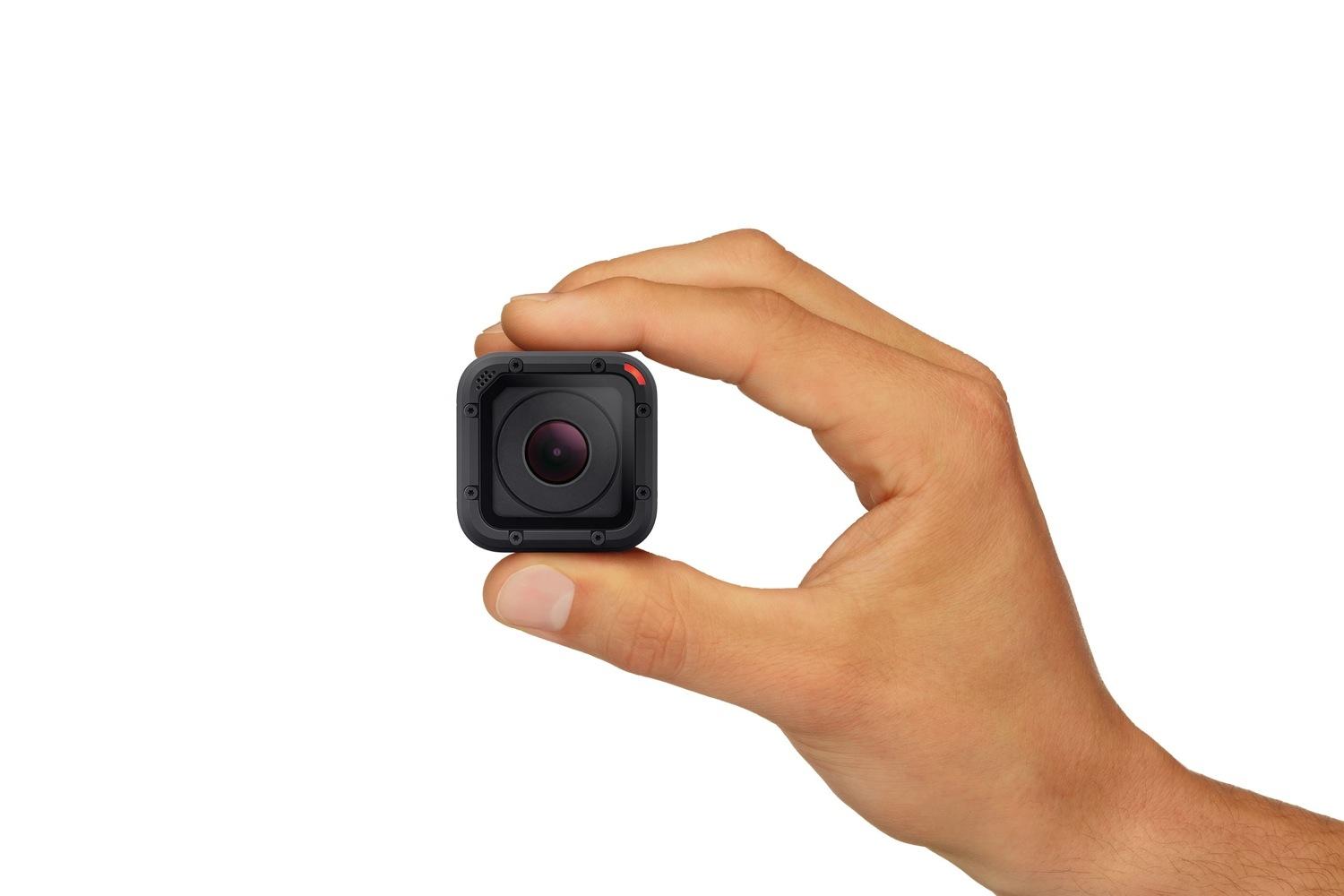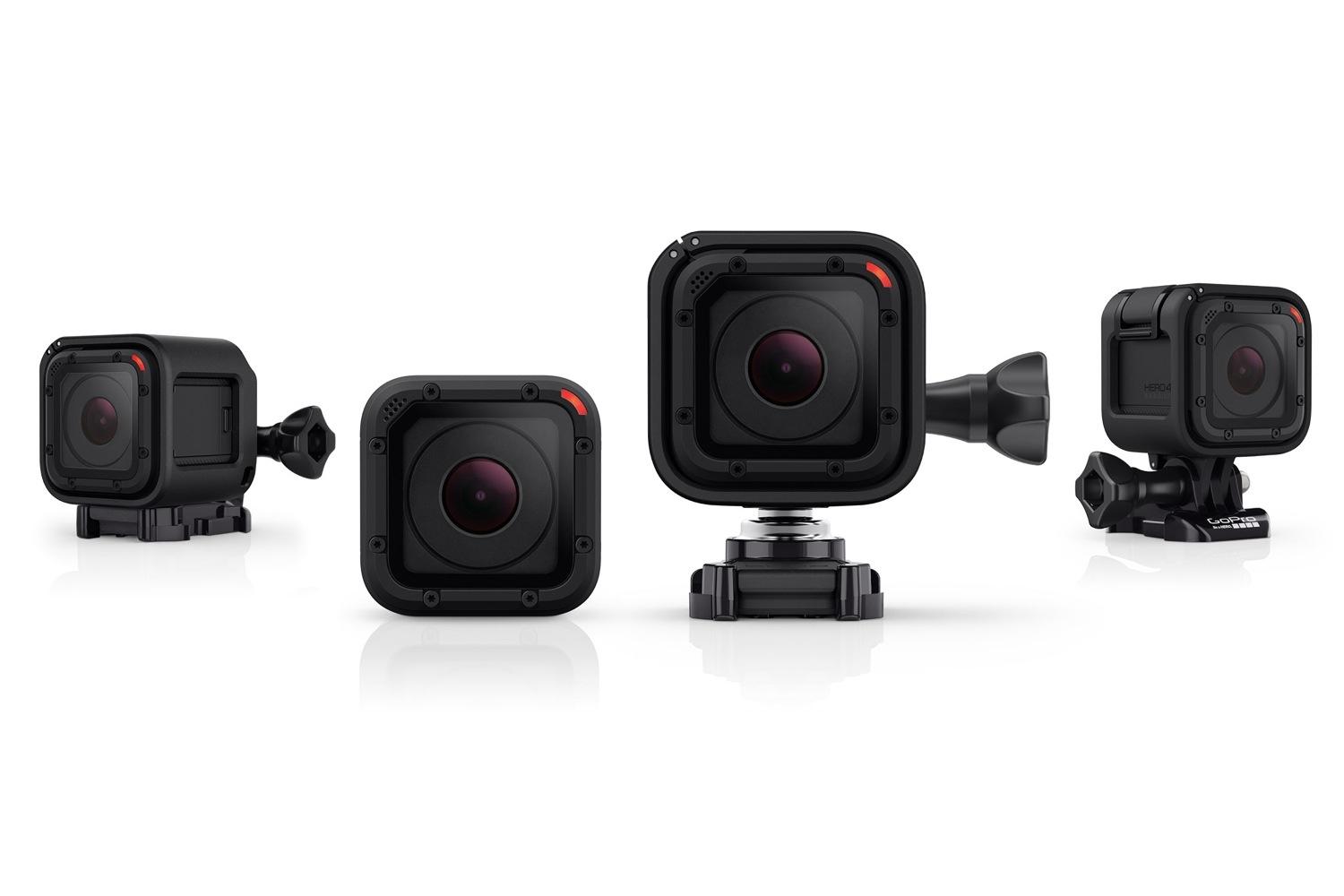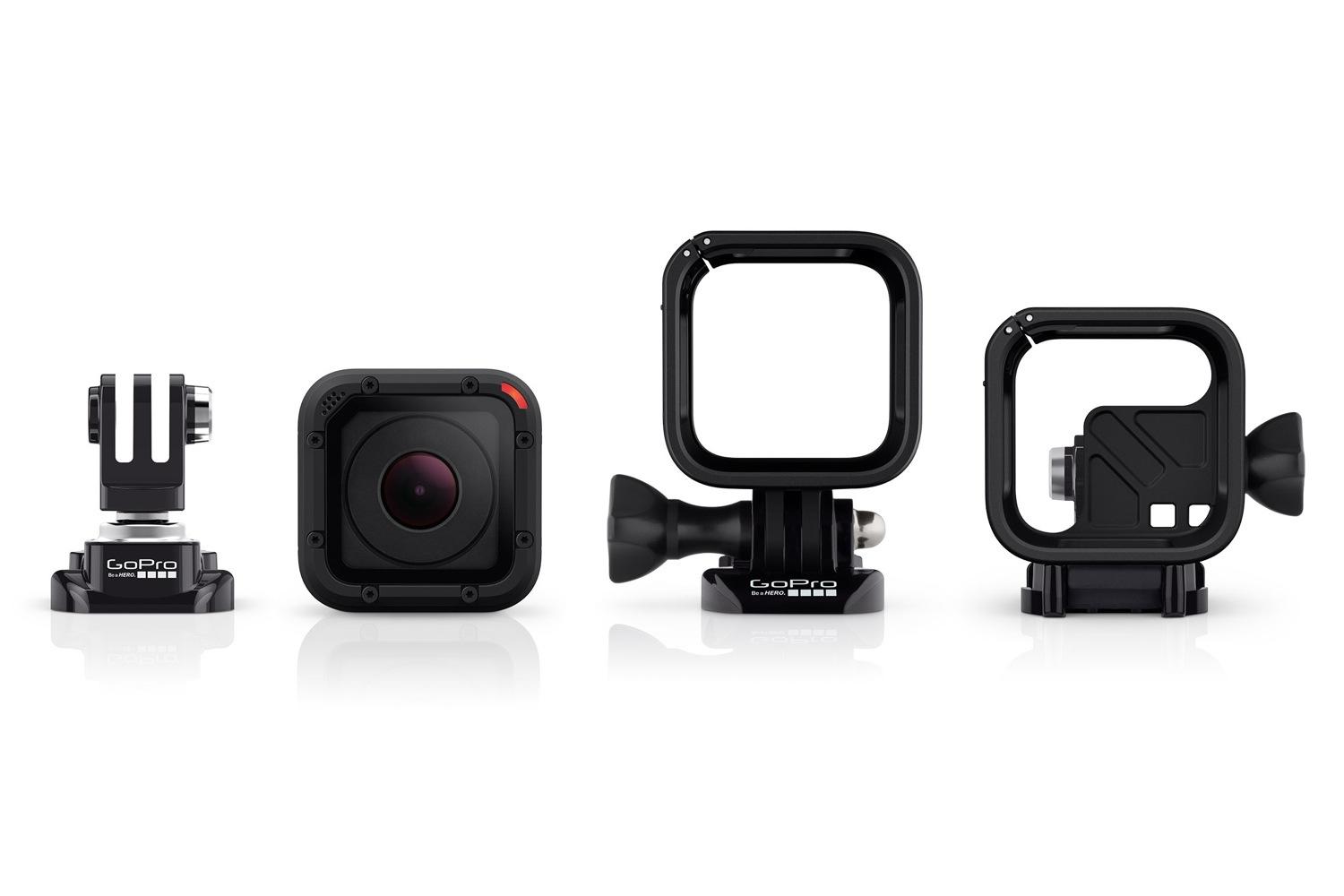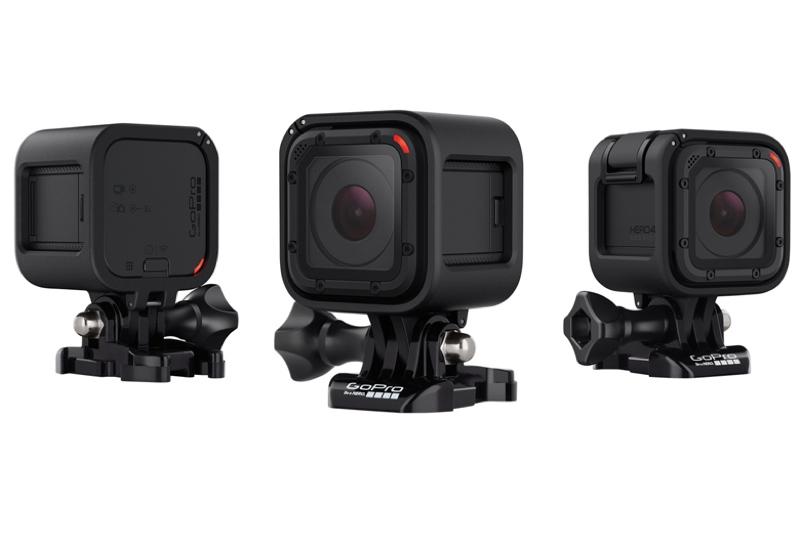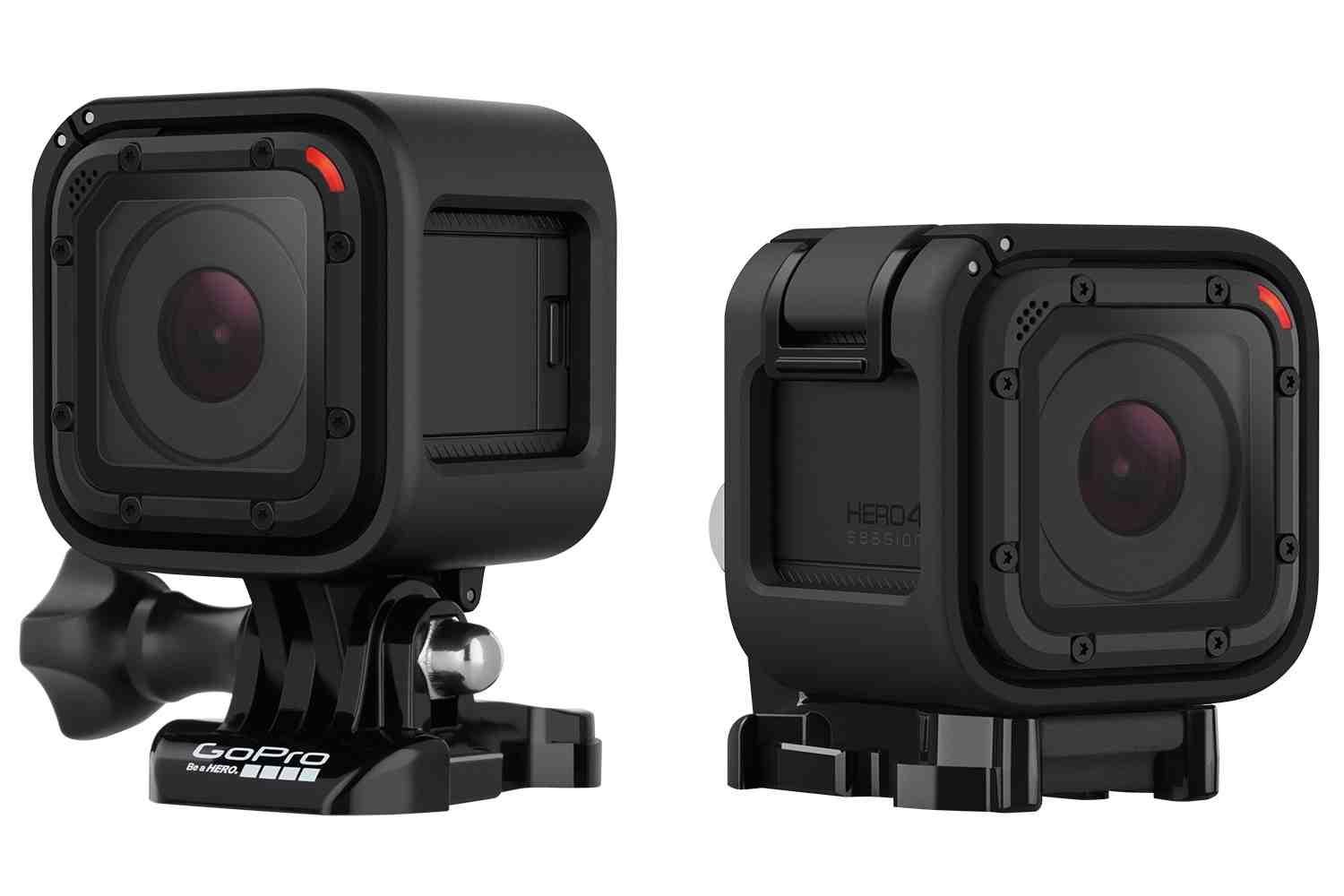Update on October 8, 2015: GoPro announced a $100 price drop for the Hero4 Session. The camera now retails for $300. Read our full review here.
Maybe Polaroid was onto something with the simple design of its Cube camera. GoPro has unveiled its new Hero4 Session. Calling it the smallest and lightest GoPro camera to date, we can’t help but notice a certain resemblance to Polaroid’s cube-like design (minus the bright colors). The new camera goes on sale on July 12, and will retail for $400.
Imagine if GoPro had stripped out the lens portion from a standard Hero form-factor and turned it into a self-containing camera – that’s what GoPro seems to have done with the Session. GoPro says it’s half the size of the Hero4 Black and Silver, as well as 40 percent lighter. It has a rugged design that’s waterproof without a need for a separate housing (up to 33 feet), like other Hero cameras, but it is compatible with the same mounts that have made GoPro cams so popular. The Session comes with three mounts: a Low-Profile Frame, a Standard Frame to use with standard GoPro mounts, and a Ball Joint Buckle that lets you easily maneuver the camera’s position.
Gone are the various control buttons and LCDs; the Session uses a single shutter button to quickly shoot photos and videos. To turn on the camera and start shooting video, simply press the button once. The camera has auto image rotation, so you can hold the camera in any orientation. Photos and videos are saved onto MicroSD cards.
Unlike the Polaroid Cube, the Session shoots higher-quality videos up to Full HD 1080 at 60p and 1440 at 30p. Photos are captured at 8 megapixels, which is the same as the new Cube with Wi-Fi and Hero+. But from our experience playing with the new Hero4 Silver and Black cameras, we can say that GoPro’s cameras are much stronger performers. In fact, GoPro says the Session has many of the same features found in the Silver and Black models, like SuperView, Protune (video only), and Auto Low Light recording modes. With built-in Wi-Fi and Bluetooth, you can adjust the settings and have greater control over the camera using the GoPro App or optional Smart Remote. Dual microphones help reduce wind noise and record better audio while underwater.
The Session seems aimed at the same crowd the Polaroid Cube is targeting: a simple-to-operate camera for quickly capturing the moment, but at $400, it’s way more expensive than the Cube (albeit better performance) or the entry-level Hero cameras, although you’ll get more features and stronger performance, including burst shooting. But it also costs the same as the Hero4 Silver, which has a lot more useful features (like Nigh Photo and Nigh Lapse, narrow field of view, color touch display), higher photo resolution, higher bitrate, pro-quality performance, and more.
We think the Silver is a better deal, but we’re sure there will be users attracted by the smaller form-factor. The compact size is less obtrusive, and can fit into plenty of places the standard Hero4 and Hero cameras can’t. If it’s using similar specs as the Silver, we think the Session’s image and video quality will be up there (from the sample YouTube video above, it looks really good), but the Silver is definitely more flexible. Click here to read our review of the Hero4 Silver.
